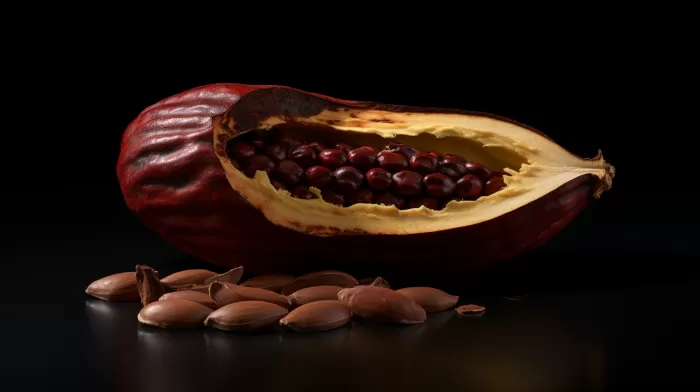Think you know what chocolate tastes like? Well, it’s not as straightforward as you might believe. When researchers analyzed the mouth-watering taste and smell of chocolate, they discovered an unexpected complexity. The well-known chocolate aroma is actually a mix of other tastes and flavors – none of which individually smell or taste like chocolate.
To understand this complexity better, let’s delve into the fascinating chemistry behind chocolate’s aroma and taste.
The Chemistry of Chocolate Flavor
Developing better chocolate requires understanding the chemistry behind the aroma and taste substances in cocoa and other ingredients. According to Peter Schieberle, Ph.D., a researcher involved in the study of chocolate’s flavor, this understanding must begin with the flavor substances in the raw cocoa bean and extend through all the processing steps and even as the consumer eats the chocolate.
A key aspect of this process is how consumers eat chocolate. Schieberle explains that when you put chocolate in your mouth, a chemical reaction occurs. However, if you merely bite and swallow chocolate, the reaction doesn’t have time to happen, and you lose a lot of flavor. So, take note – to fully appreciate the flavors of chocolate, let it sit and melt in your mouth.
As researchers couldn’t pinpoint a single compound with the aroma of cocoa, they had to meticulously separate individual aromas and put them back together for taste testers to experience. This process provides crucial insight into how aroma substances work together to stimulate human odor and taste receptors, culminating in the overall perception of chocolate in the brain.
The Unexpected Aromas in Chocolate
Are you ready for a surprising revelation? To create a chocolate aroma, substances with these smells (and others) need to be combined:
- Potato chips
- Cooked meat
- Peaches
- Raw beef fat
- Cooked cabbage
- Human sweat
- Earth
- Cucumber
- Honey
The combination of these smells might seem bizarre, but they work together to create the unique and irresistible aroma of chocolate.
The Science of Chocolate Making
The process of making chocolate is an intricate one that utilizes the unique properties of the cocoa bean and the careful manipulation of specific aromatic compounds. The journey from raw cocoa beans to the smooth, satisfying chocolate we all know and love is a fascinating example of science in action.
Cocoa beans are first fermented to develop their flavor profile, then dried and roasted. Roasting deepens the flavor and aroma of the beans, creating a rich, complex, and multi-faceted taste. The roasted beans are then crushed into nibs and ground into chocolate liquor – a thick, dark liquid consisting of cocoa solids and cocoa butter.
This chocolate liquor is further processed to separate the cocoa solids from the cocoa butter. The cocoa solids are dried and milled into a fine cocoa powder, which is then mixed with other ingredients such as sugar, milk powder (for milk chocolate), and additional cocoa butter, depending on the desired type of chocolate.
The chocolate mixture goes through a process called conching, which involves continuously stirring and grinding the mixture at high temperatures for several hours. This kneads and smooths the chocolate, developing its silkiness and refining its flavor.
After conching, the chocolate is tempered, which involves carefully cooling and reheating it to achieve the desired crystalline structure that gives chocolate its characteristic snap and sheen. It then undergoes molding and cooling before it finally reaches the consumer’s taste buds.
The Allure of Chocolate
The intricate chemistry behind chocolate’s flavor and the elaborate process of chocolate-making showcase the marvel and mystery of something many of us take for granted. Chocolate is undeniably a favorite treat for many, with its smooth texture and rich taste offering a moment of indulgence and delight.
Next time you enjoy a piece of chocolate, take a moment to savor the complex flavors and aromas at play. Let it melt in your mouth, appreciate its unique combination of tastes, and remember the masterful science that makes this delicious indulgence possible.



